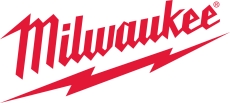Visibility Hazards
The Occupational Safety and Health Administration (OSHA) regulates jobsites in standard 1926.56(a), among other standards:
“Construction areas, ramps, runways, corridors, offices, shops, and storage areas shall be lighted to not less than the minimum illumination intensities listed in Table D-3 while any work is in progress.”
Noncompliance risks an unhappy workforce, jeopardizes the safety and health of employees, and can trigger legal costs, workers’ compensation claims, and fines.
Poor lighting can contribute to falls, which are the leading cause of fatal workplace injuries. All “Fatal Four” accident categories4 can potentially be impacted by inadequate lighting.
In addition to fatalities, poor lighting can contribute to slip, trip, and non-fatal fall injuries.5 Severe consequences like back injuries and torn ligaments can result.
Even a normally safe area in the daylight, such as an ordinary curb, can become a fall hazard after dark if lighting is absent. Workers on foot can be injured due to hidden hazardous conditions masked by poor lighting. These can include a change in elevation in a darkened area, a slick spot on a walkway, an unseen cord, or an obstacle in a dimly lit path, stairway, or parking lot.
Also, when heavy equipment is located on shadowy sites, workers may not be able to see where a moving object is located relative to them, how fast it’s moving, or how it’s shaped, with possible protruding attachments. Workers operating heavy machinery like bulldozers or backhoes could strike a crew member.
Portable battery-powered tower lights can help jobsites immediately meet the need for visibility.
A Better Way to Work
Lighting technology has leapfrogged from Thomas Edison’s first commercially practical incandescent bulb in 1879 to today’s era of LED tower lights.6 Each time, new technology disrupted the way people lived and worked. And each time, these innovations delivered on the belief: “There is a better way.”
Innovations include:
- 1940s: Fluorescent lights tripled the efficiency of incandescent bulbs and lasted longer.
- 1990s: Compact fluorescent lights (CFLs) cut the energy use of incandescent bulbs by about 75 percent and lasted about 10 times longer.
- 1995: The age of LEDs (light-emitting diodes) began, with high-quality LED lamps using at least 75 percent less energy than incandescent lamps and lasting 25 times longer.7
Continuing the belief that “there is a better way,” more recent innovations fundamentally changed temporary lighting:
- 2009: MILWAUKEE® became the first manufacturer to integrate LED lamps into battery-operated, cordless lighting solutions that are built to withstand jobsite conditions.
- 2020: The MX FUEL™ ROCKET™ Tower Light/Charger joined the new MX FUEL™ line of battery-operated solutions that redefines light equipment.
Along with the evolution in technology, the mindset on today’s jobsites is changing. Workers realize that safety risks they used to accept as “part of the job,” such as the risks surrounding poor lighting, are addressable on the jobsite.
An example: In 2020, Koetter Construction began a field tryout of MX FUEL™ battery-powered equipment. Koetter is one of the largest full-service, design-build general contractors and commercial developers in Southern Indiana and Greater Louisville, Kentucky. As a result of the months-long tryout, Koetter crews realized the benefits of eliminating gas-powered equipment and its maintenance. “You don’t know what you don’t know,” Hardscape Manager Nick Moses said. “We accepted the problems but now we realize we don’t have to.”
Continue reading this whitepaper in its entirety to learn about the benefits of battery power and Milwaukee's new solution, the MX FUEL™ ROCKET™ Tower Light/Charger, the brightest battery-powered light in the industry.
Browse MSCDirect.com to see a variety of Milwaukee lighting solutions to help keep your workplace safe and productive.




max_efficiency_thumb.png?itok=_OhRZeS3)




Talk to Us!
Leave a reply
Your email address will not be published. Required fields are marked *